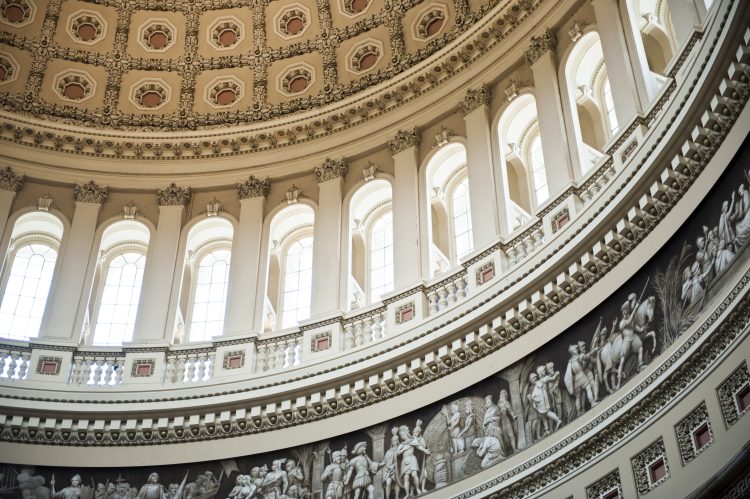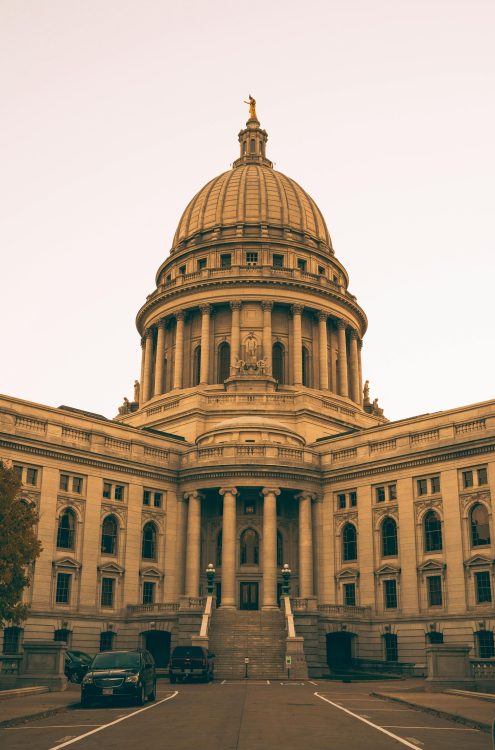This week on Facing the Future, we took a break from the federal budget but kept our focus on public sector budgeting. States have budgets too and the choices can be just as difficult and just as impactful on constituents as the federal budget. As an example, we examined the New Hampshire state budget with Phil Sletten, Senior Policy Analyst at the New Hampshire Fiscal Policy Institute, an independent, non-profit policy research organization in Concord NH, where he has worked since 2016. Phil is also a member of The Concord Coalition’s New Hampshire Advisory Board. Tori Gorman, Policy Director of the Concord Coalition, joined the conversation.
We examined how the New Hampshire state budget is put together, where the money goes, how the money is raised, and whether there are structural issues that affect future policy options. We also noted a few comparisons with the federal budget.
The most obvious distinction between the federal budget and the New Hampshire budget is the size. The latest two-year New Hampshire budget weighs in at $13.6 billion while the federal budget is more than $6 trillion, about 450 times larger than the state’s budget.
Another distinction is that the state budget is required to balance, whereas there is no such requirement at the federal level. Gorman and Sletten were quick to point out, however, that it is only the operating budget in New Hampshire that must be balanced.
“Not all state expenditures are in the state budget,” Sletten said.
Aside from the operating budget, “There is also a six-year capital budget that is updated every two years; there’s a 10-year transportation improvement plan and the legislature can pass bills separately that have separate pieces of appropriations that are not necessarily accounted for in the state budget itself, even if they are part of the calculus around…whether the state budget balances or not,” Sletten explained.
Two categories make up a large portion of the state budget. Sletten observed that “Health and social services is about 44 percent. Education is a little under a quarter, 23-24 percent, so those two together comprise two-thirds of state expenditures in New Hampshire.”
On the revenue side, Sletten said that in New Hampshire “there are many different revenue sources” but no one dominant source. About 30 percent of the state budget, based on pre-pandemic levels, is funded by federal money. These funds are typically associated with specific programs, such as Medicaid, transportation, water pollution mitigation, and food stamps.
The largest state tax is a business profits tax. Other state taxes include a statewide education property tax, a meals and rental tax, a business enterprise tax, and highway tolls. New Hampshire does not have a broad-based sales tax or income tax.
Sletten said that the New Hampshire budget faces some of the same long-term challenges as the federal budget due to an aging population. As the cost of health services goes up, he said, “when we are looking decades into the future, the questions are: can our state revenue system keep up with increased service needs; does the economy slow as the population ages; what happens with health care costs and caregiving costs?”
We closed with a discussion of how COVID relief funds from the federal government have been deployed in New Hampshire, aside from helping to produce a budget surplus. Sletten noted that the emphasis in last year’s CARES Act funding was to get money out the door as quickly as possible and with maximum flexibility. With the more recent American Rescue Plan Act, Sletten said, there is a longer timeline for when the funds must be spent (obligated by 2024 and spent by 2026), meaning “there is the potential for a lot more strategic planning around how these funds can be deployed.”
We examined how the New Hampshire state budget is put together, where the money goes, how the money is raised, and whether there are structural issues that affect future policy options. We also noted a few comparisons with the federal budget.
The most obvious distinction between the federal budget and the New Hampshire budget is the size. The latest two-year New Hampshire budget weighs in at $13.6 billion while the federal budget is more than $6 trillion, about 450 times larger than the state’s budget.
Another distinction is that the state budget is required to balance, whereas there is no such requirement at the federal level. Gorman and Sletten were quick to point out, however, that it is only the operating budget in New Hampshire that must be balanced.
“Not all state expenditures are in the state budget,” Sletten said.
Aside from the operating budget, “There is also a six-year capital budget that is updated every two years; there’s a 10-year transportation improvement plan and the legislature can pass bills separately that have separate pieces of appropriations that are not necessarily accounted for in the state budget itself, even if they are part of the calculus around…whether the state budget balances or not,” Sletten explained.
Two categories make up a large portion of the state budget. Sletten observed that “Health and social services is about 44 percent. Education is a little under a quarter, 23-24 percent, so those two together comprise two-thirds of state expenditures in New Hampshire.”
On the revenue side, Sletten said that in New Hampshire “there are many different revenue sources” but no one dominant source. About 30 percent of the state budget, based on pre-pandemic levels, is funded by federal money. These funds are typically associated with specific programs, such as Medicaid, transportation, water pollution mitigation, and food stamps.
The largest state tax is a business profits tax. Other state taxes include a statewide education property tax, a meals and rental tax, a business enterprise tax, and highway tolls. New Hampshire does not have a broad-based sales tax or income tax.
Sletten said that the New Hampshire budget faces some of the same long-term challenges as the federal budget due to an aging population. As the cost of health services goes up, he said, “when we are looking decades into the future, the questions are: can our state revenue system keep up with increased service needs; does the economy slow as the population ages; what happens with health care costs and caregiving costs?”
Hear more on Facing the Future. I host the program each week on WKXL, NHTalkRadio.com (N.H.), and it is also available via podcast. Join me and my guests as we discuss issues relating to national fiscal policy with budget experts, industry leaders, and elected officials. Past broadcasts are available here. You can subscribe to the podcast on Spotify, Pandora, iTunes, Google Podcasts, Stitcher or with an RSS feed. Follow Facing the Future on Facebook, and watch videos from past episodes on The Concord Coalition YouTube channel.
Continue Reading





